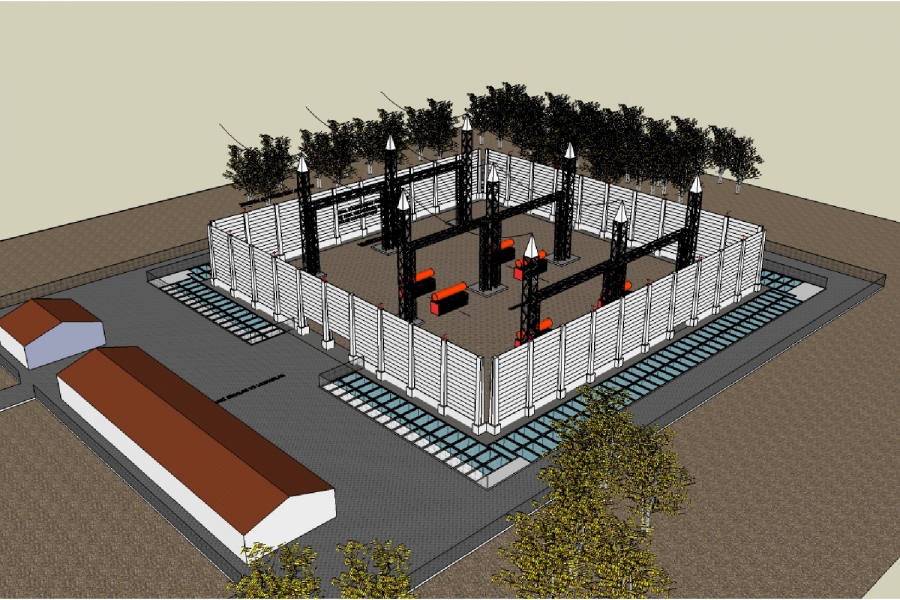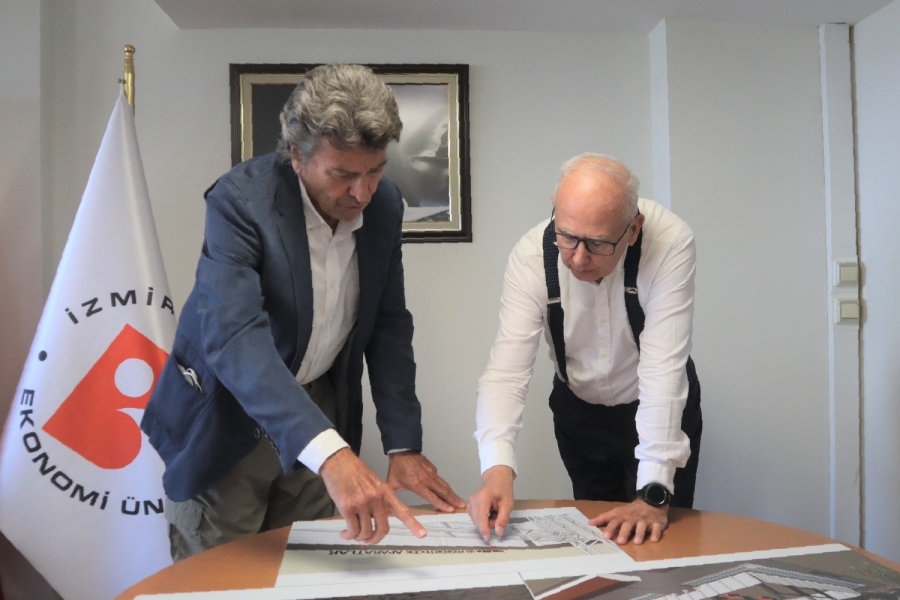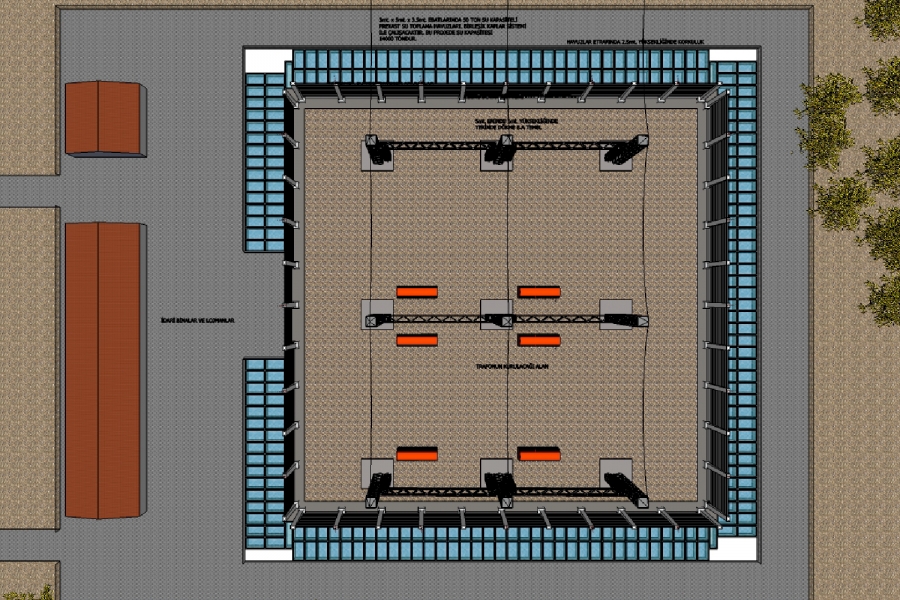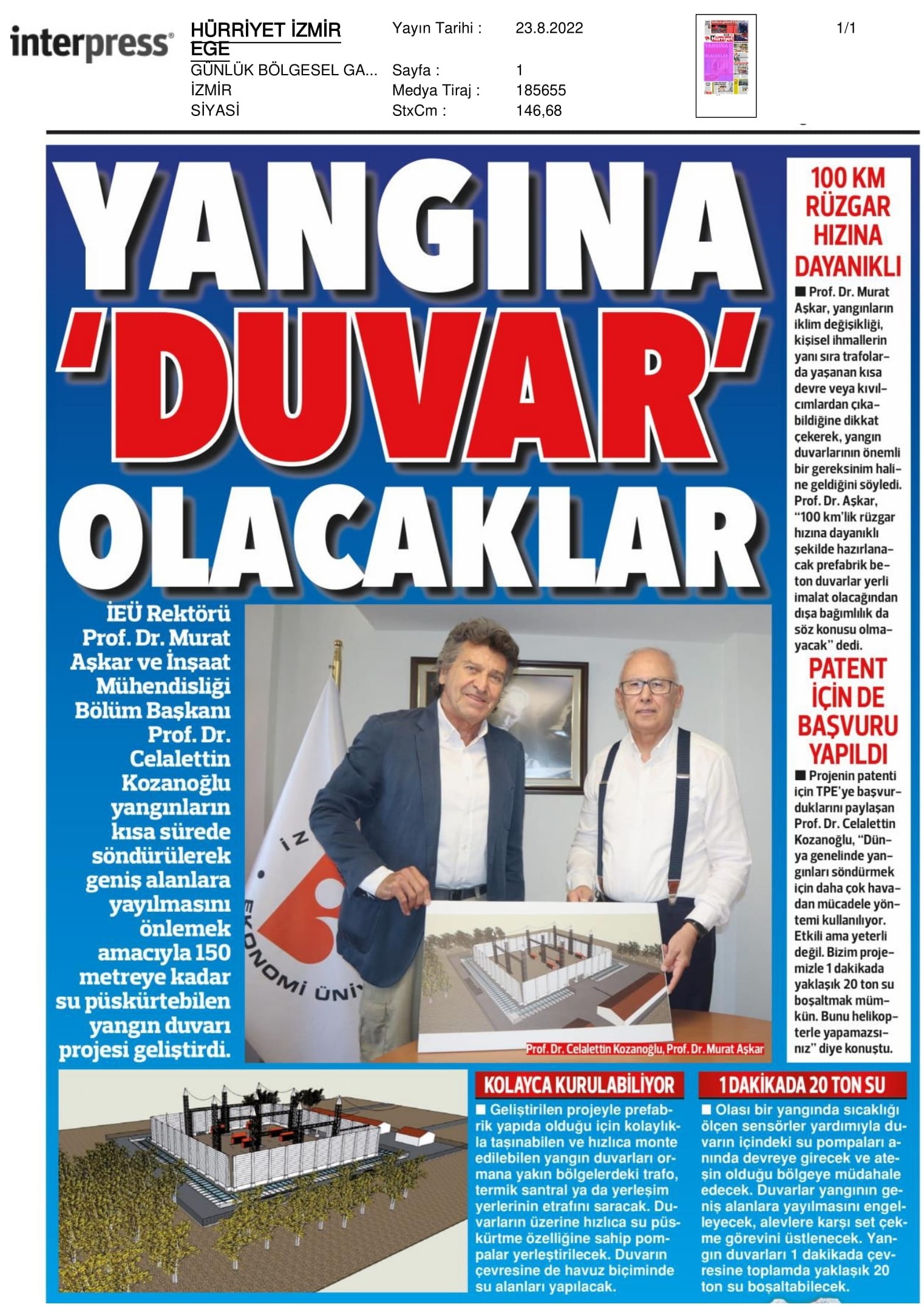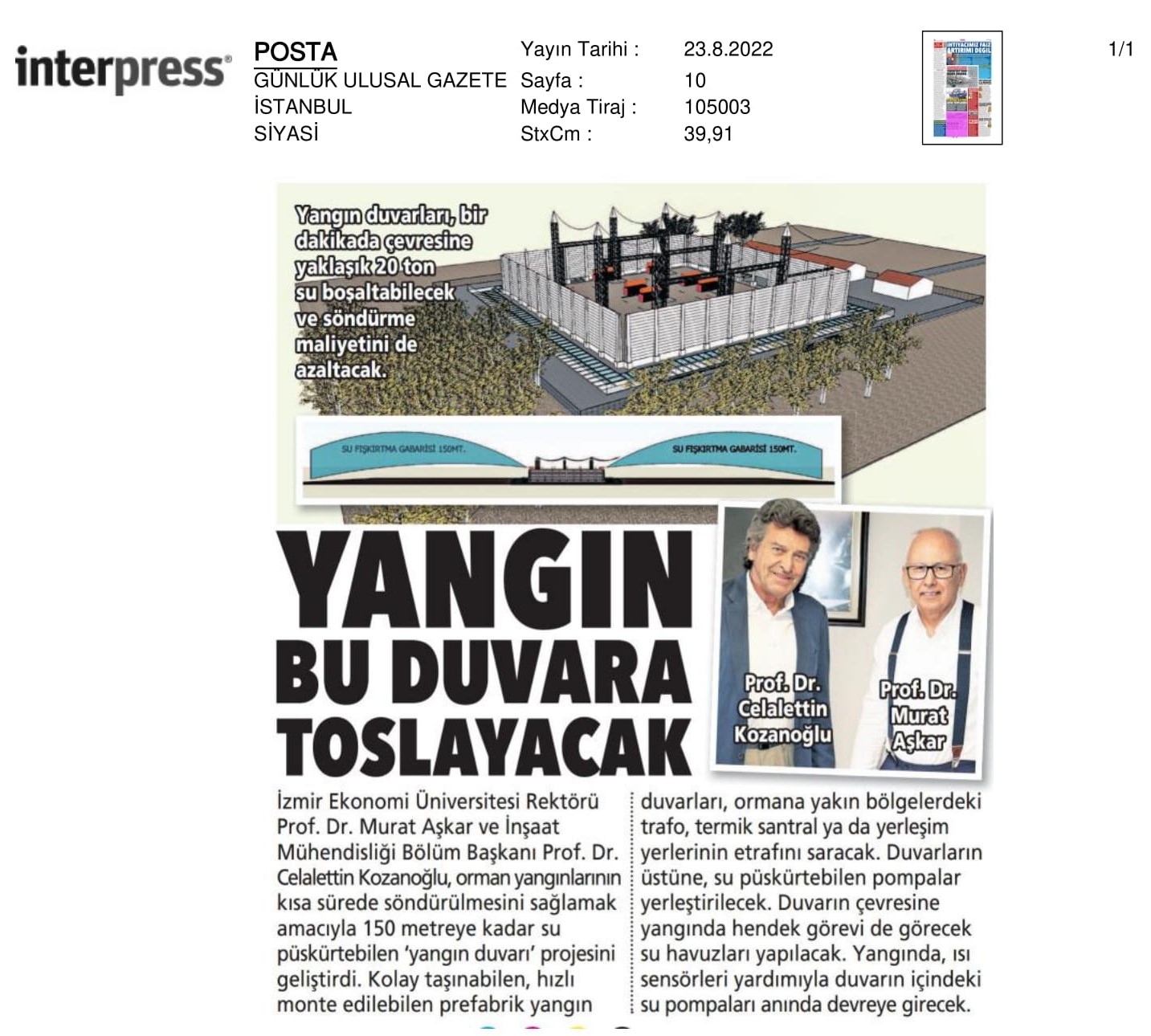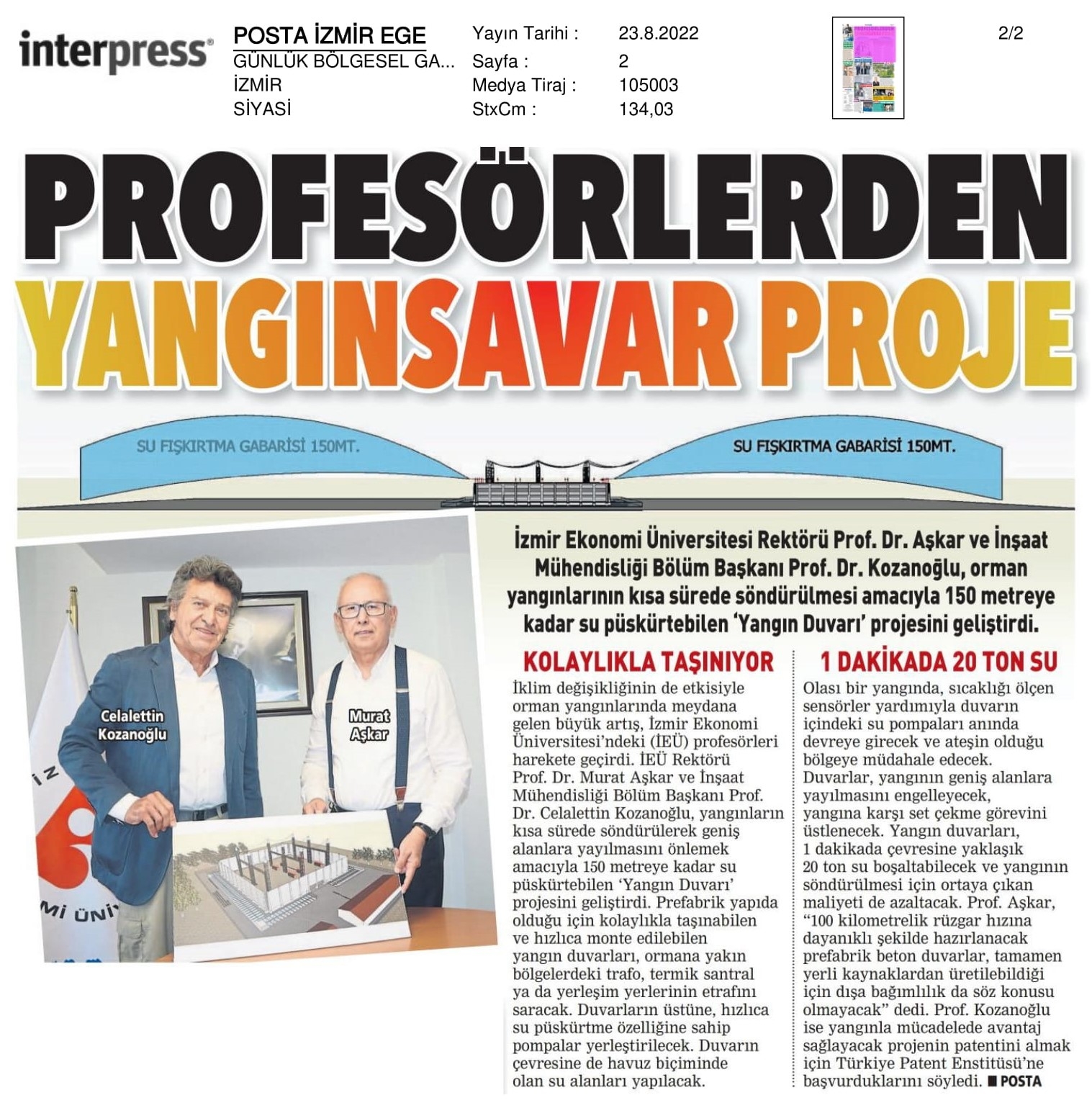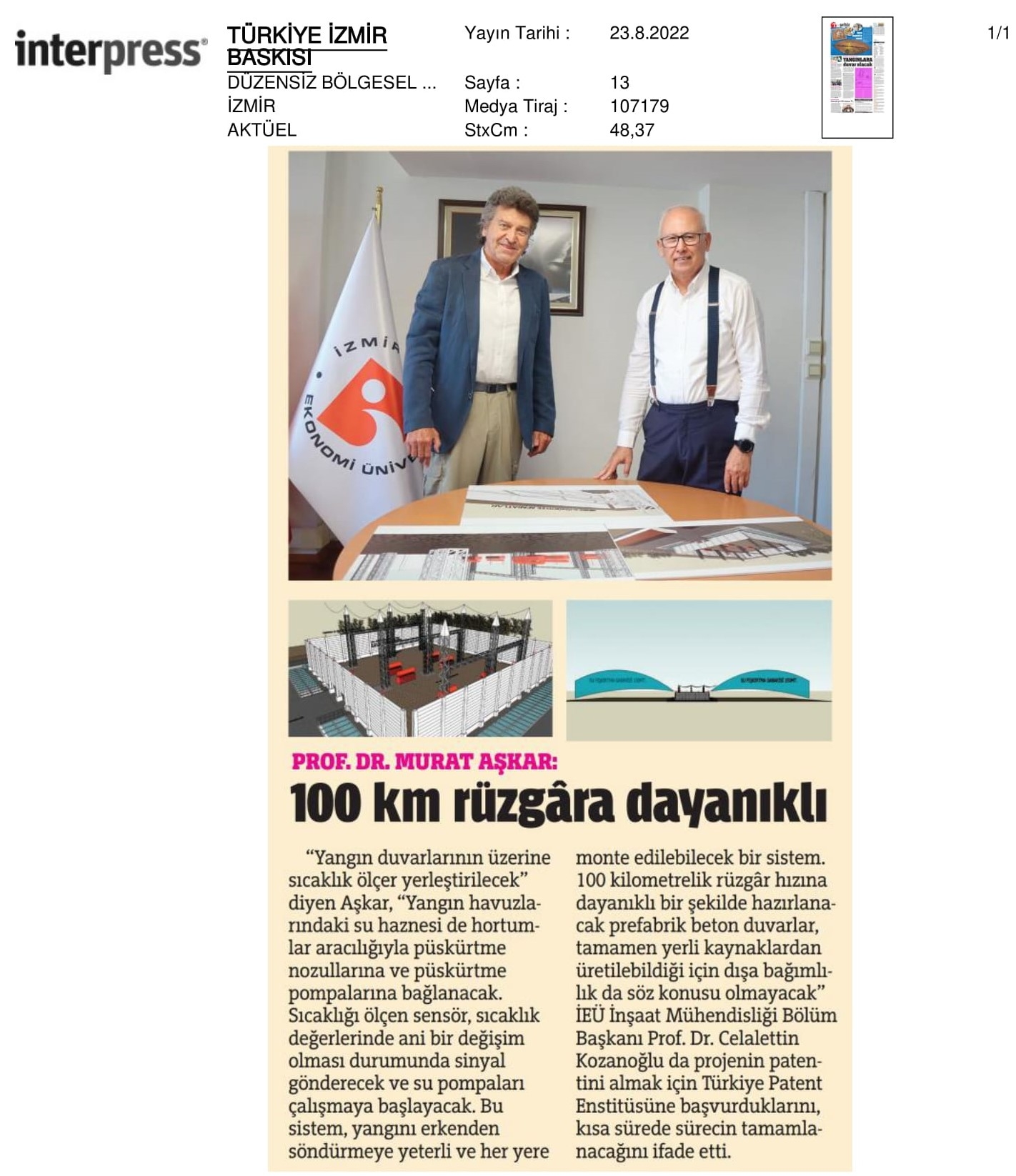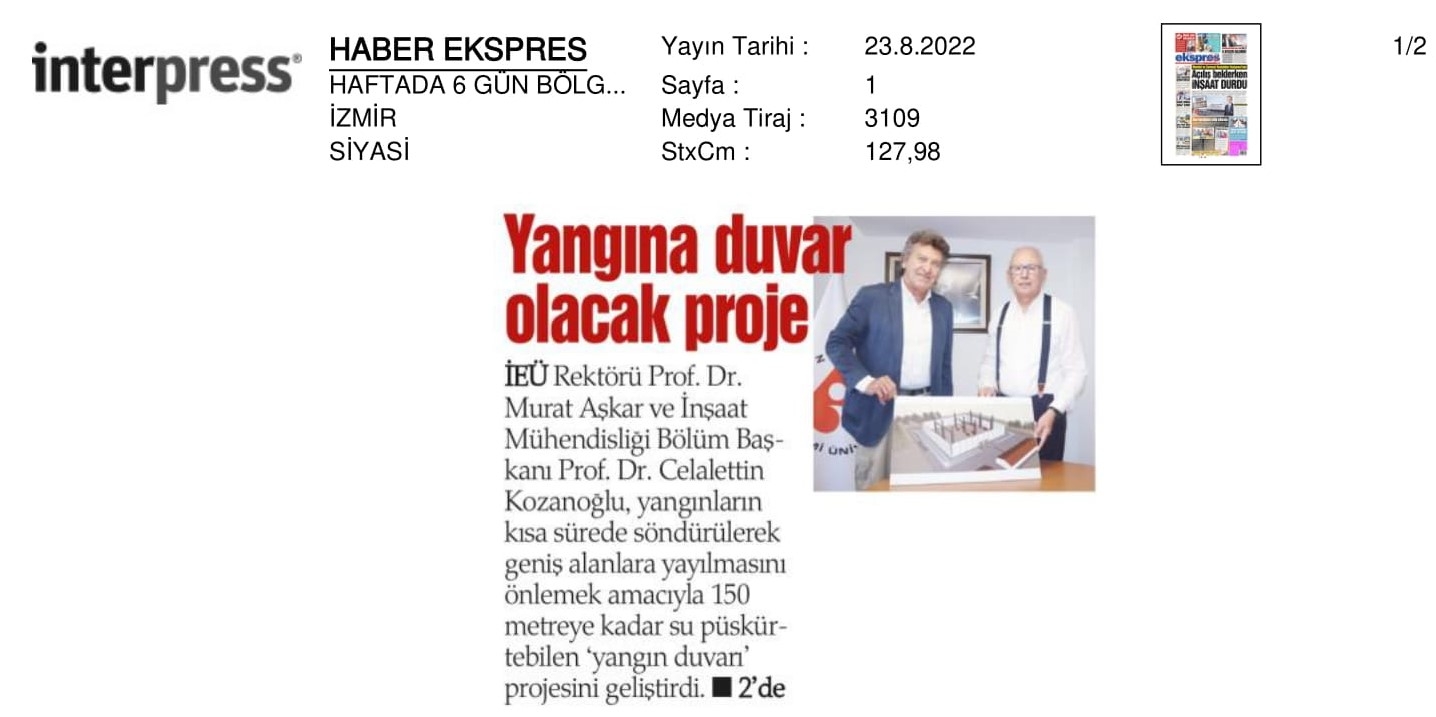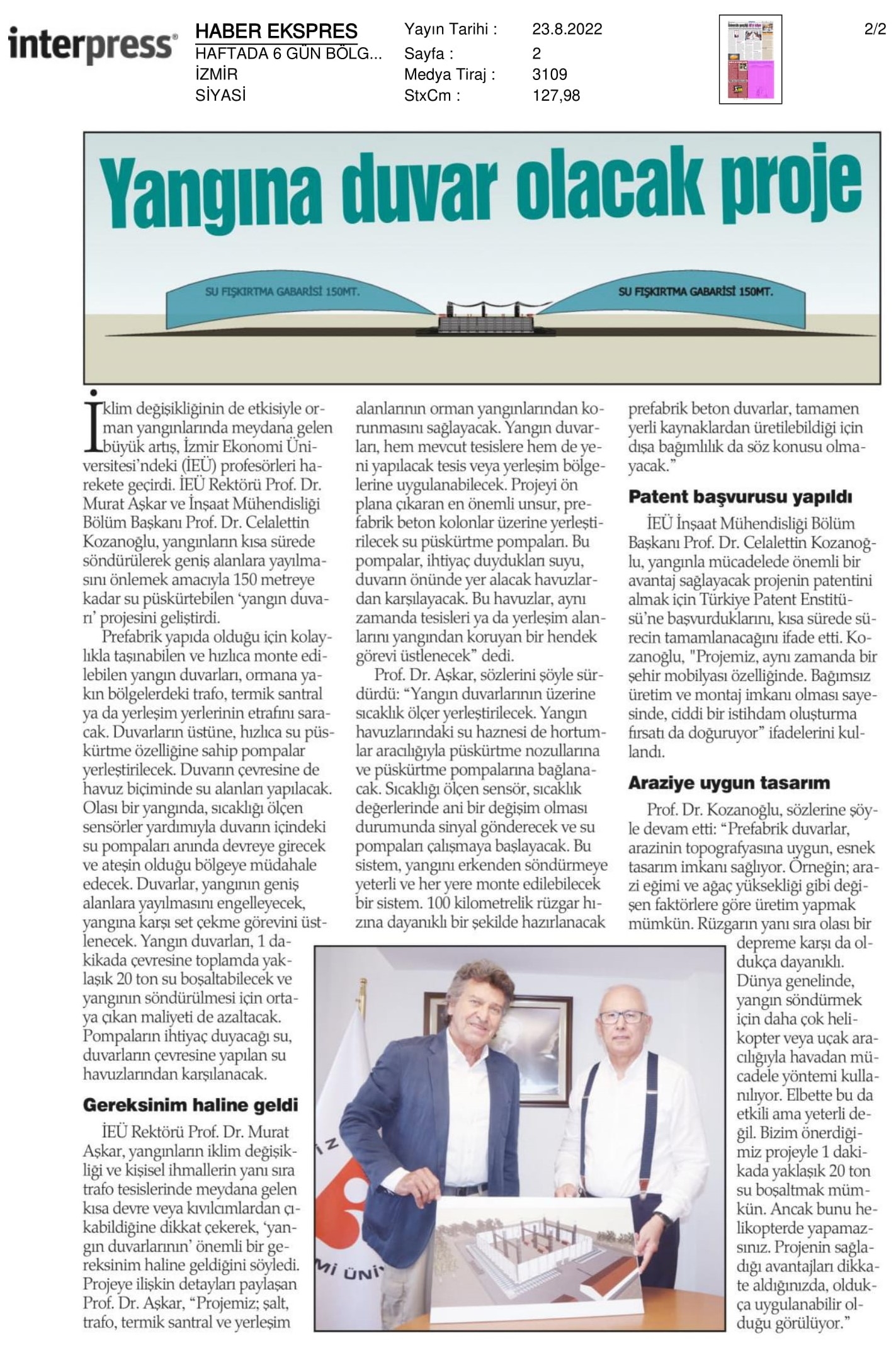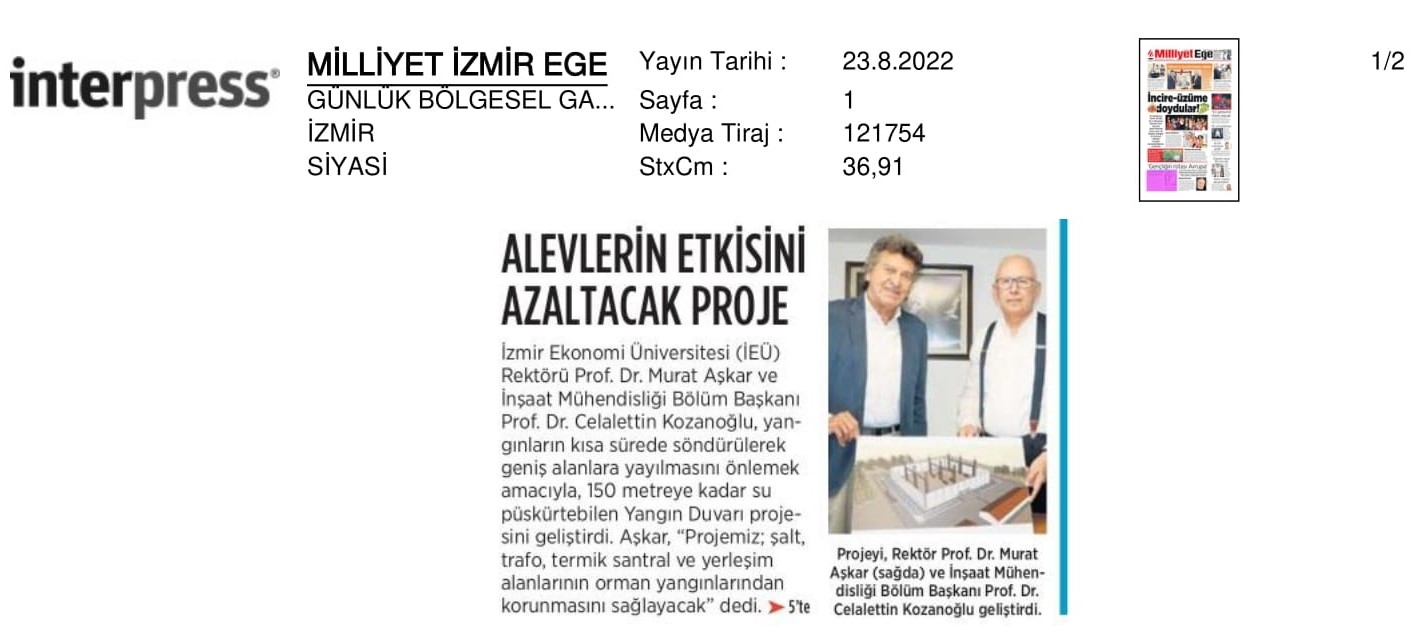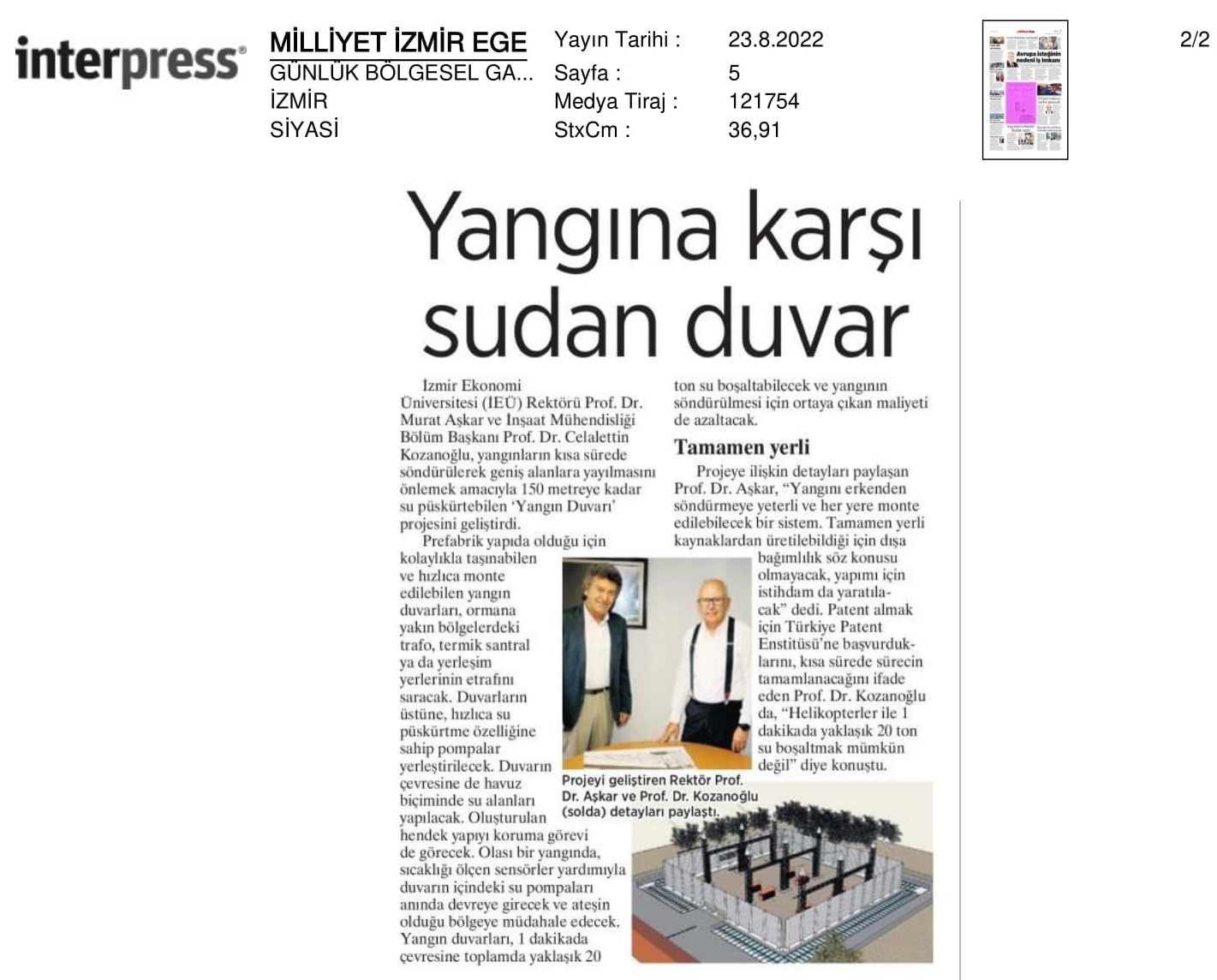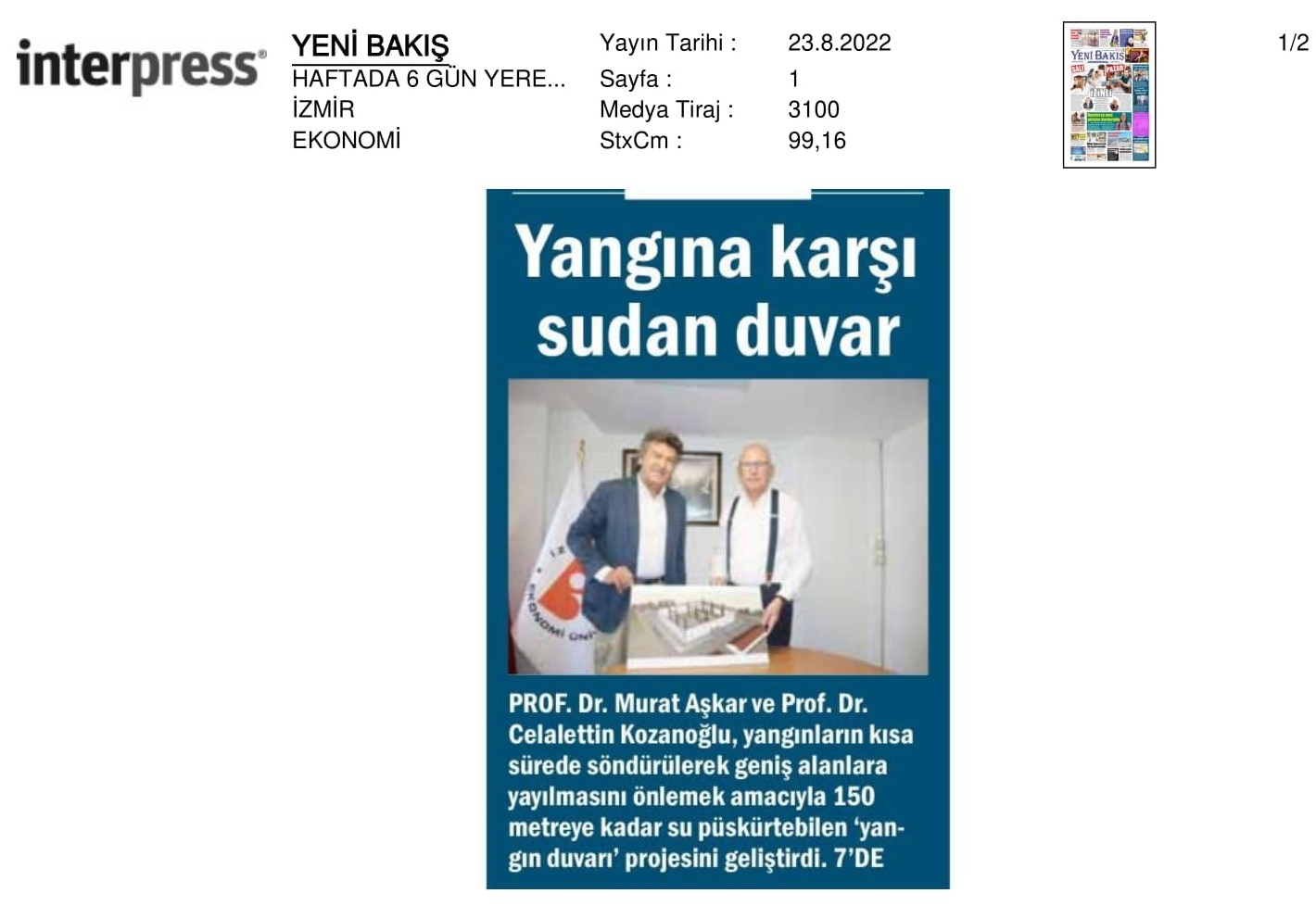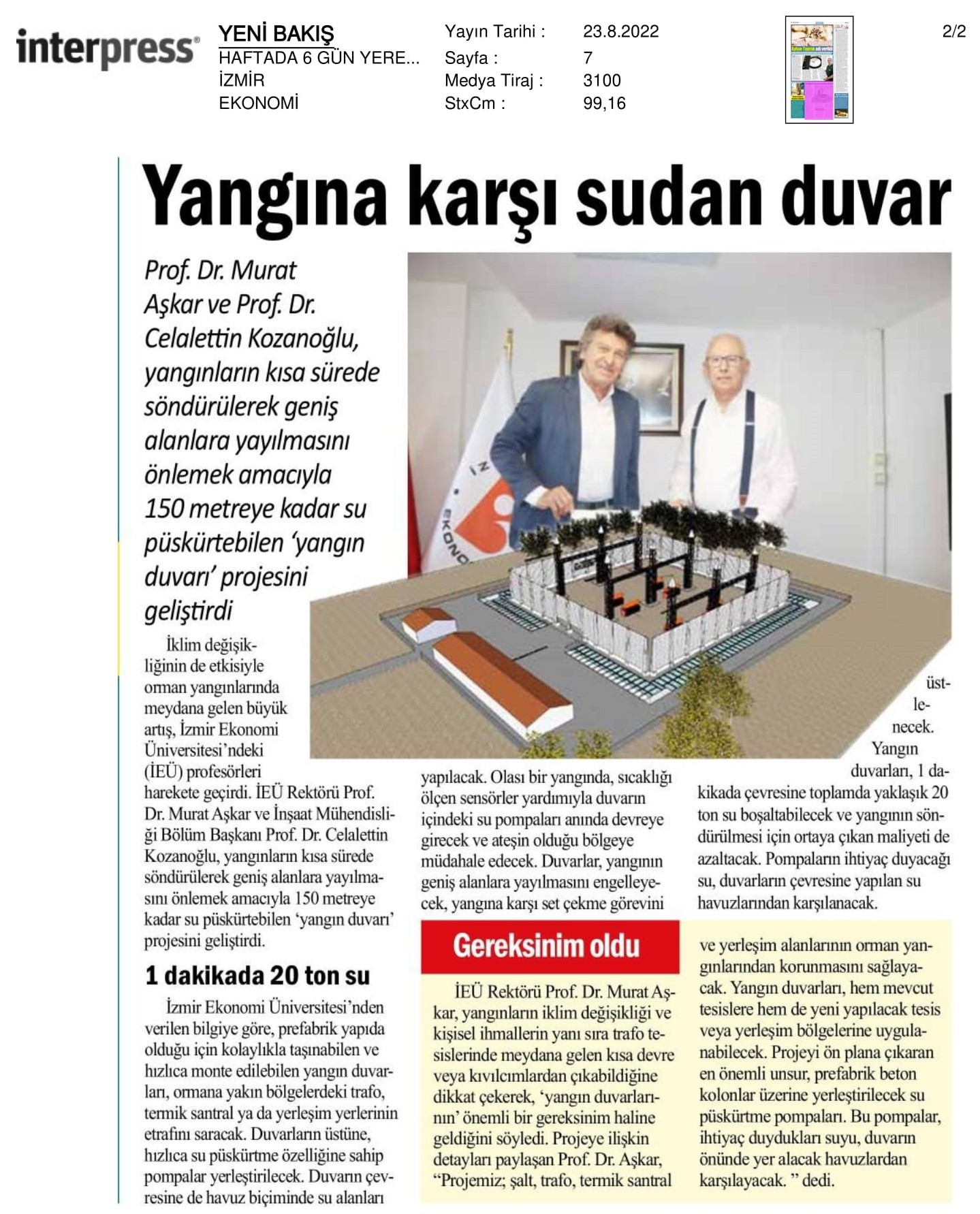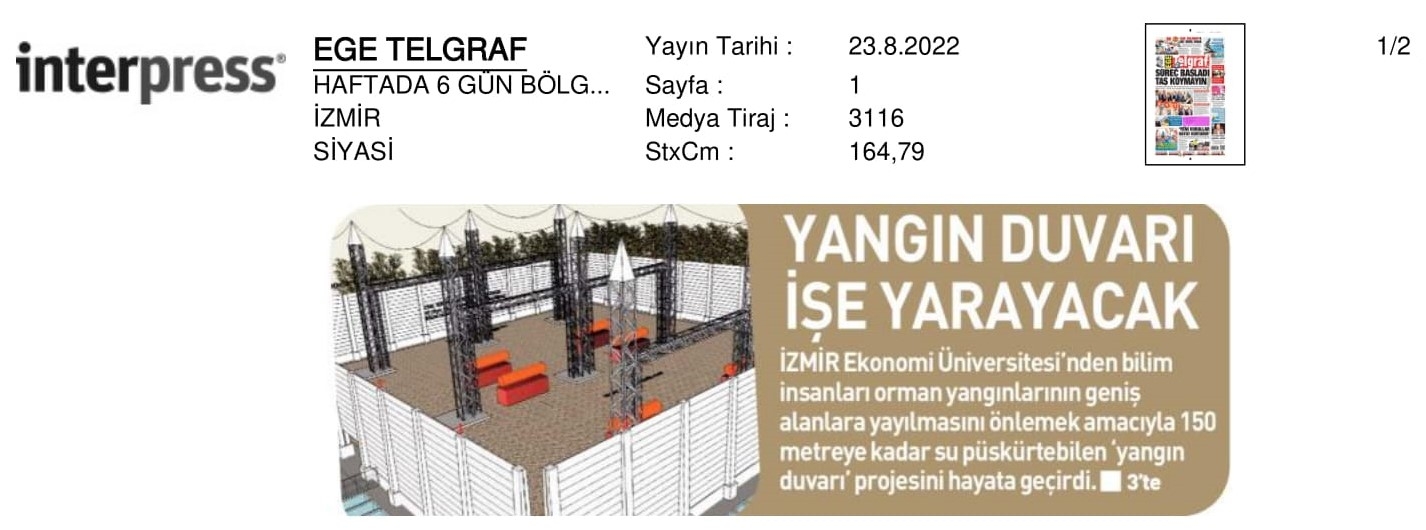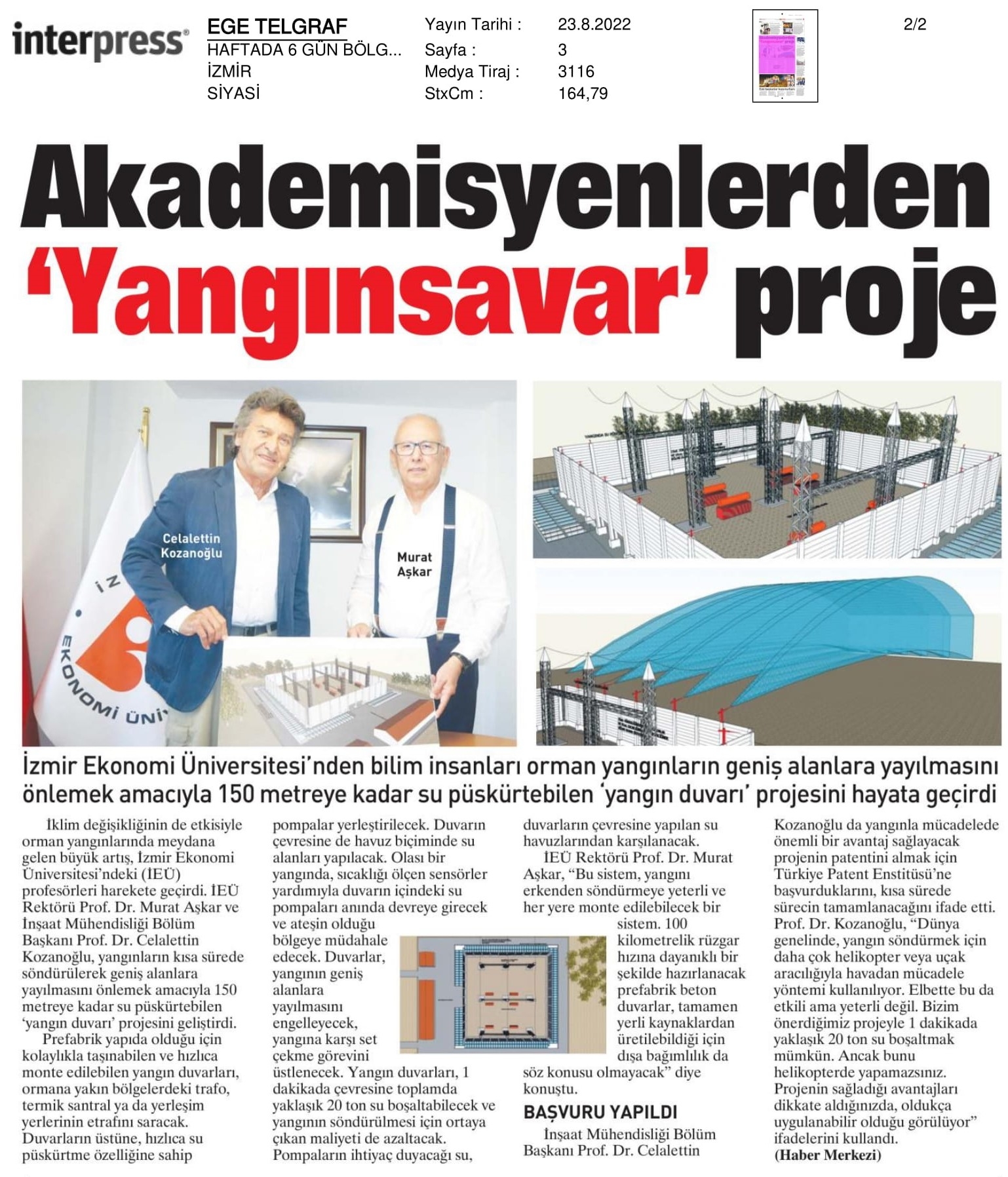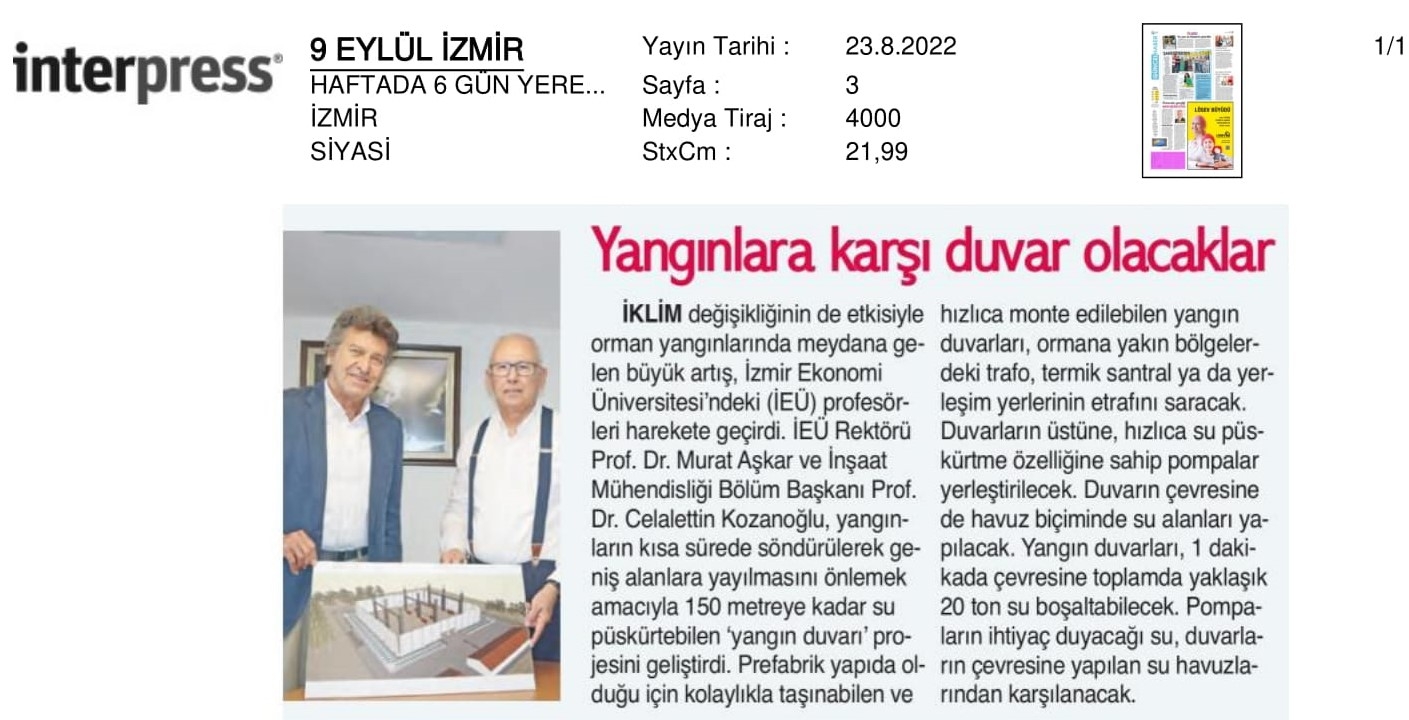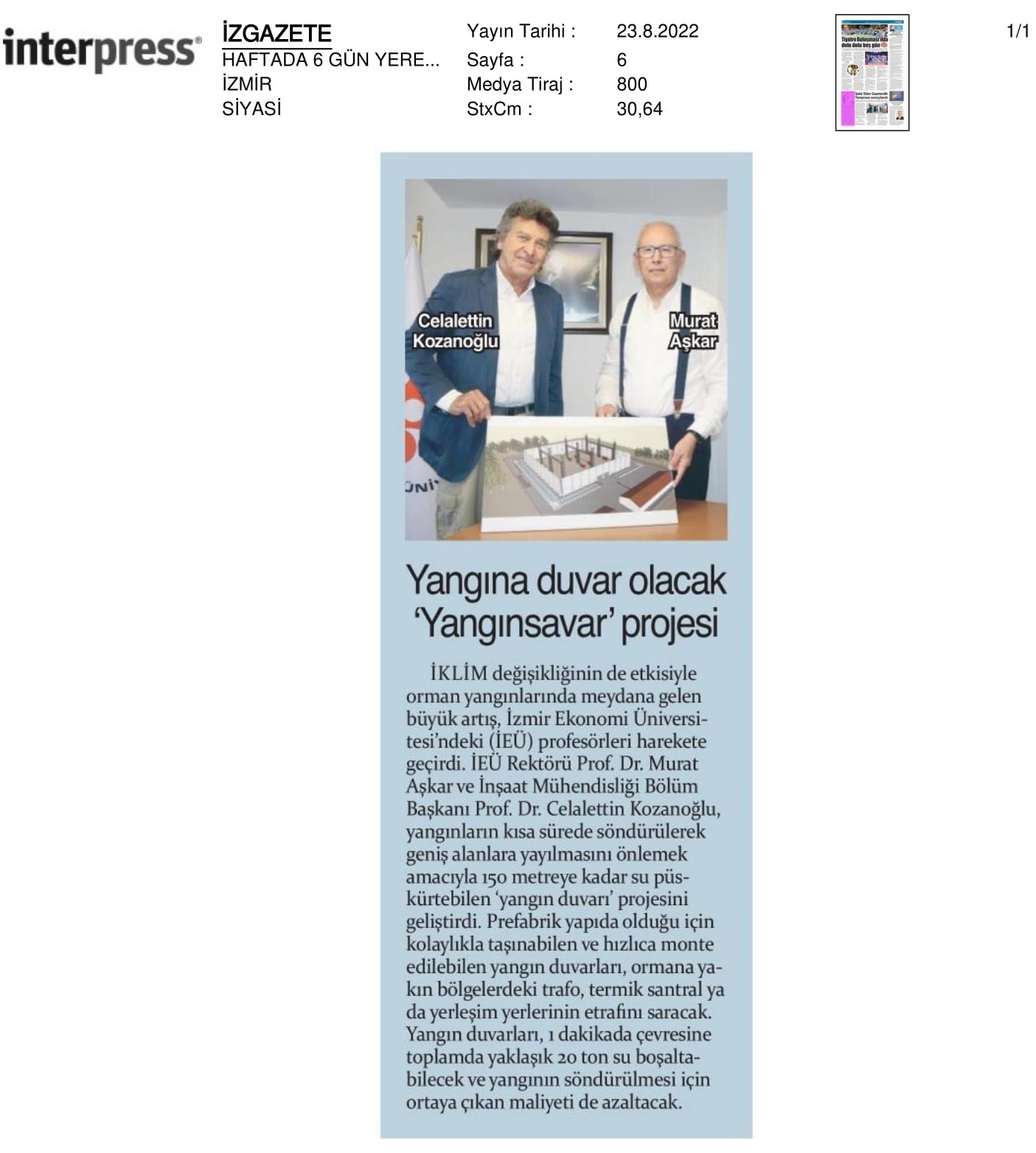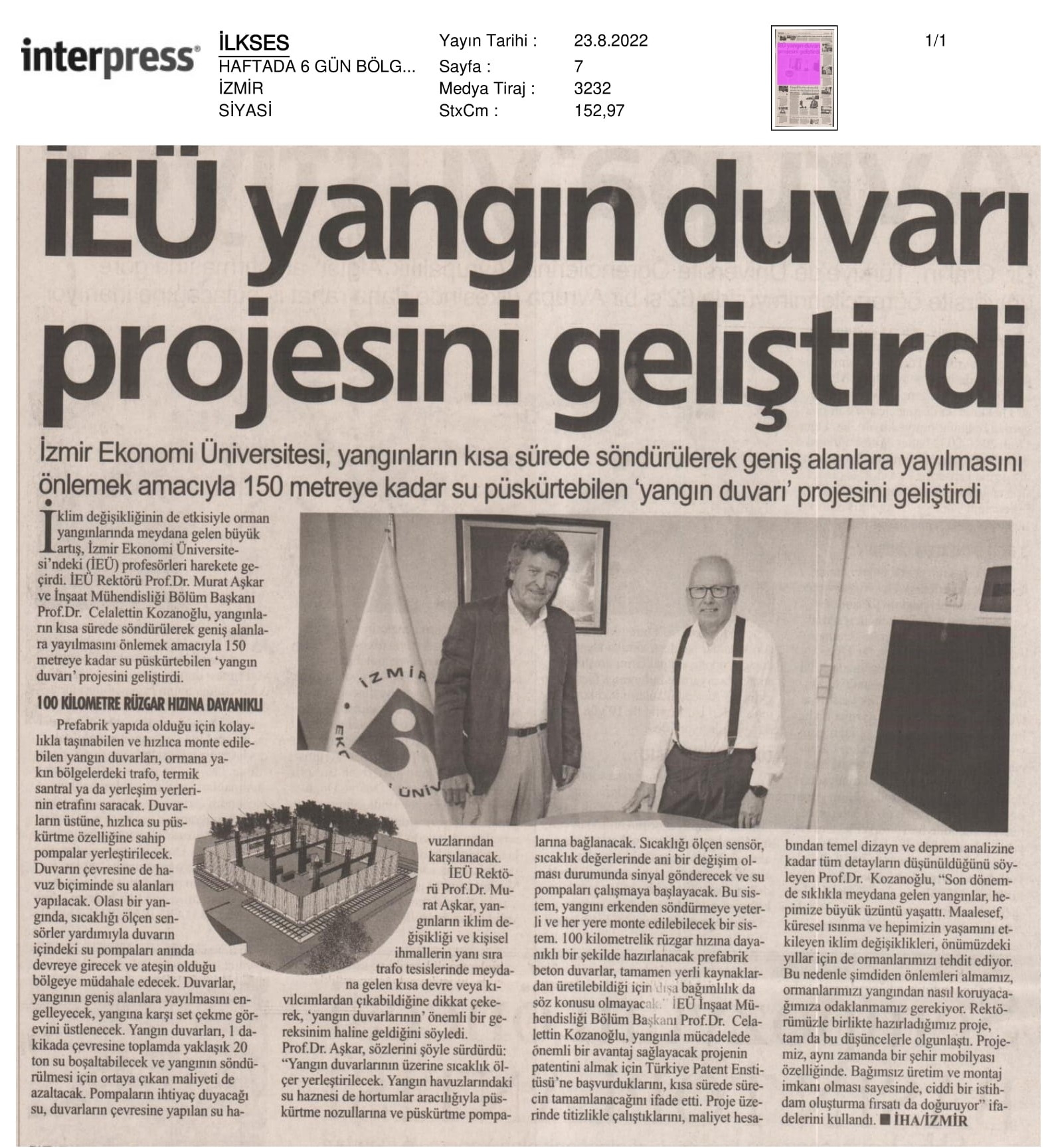‘Firewall’ project
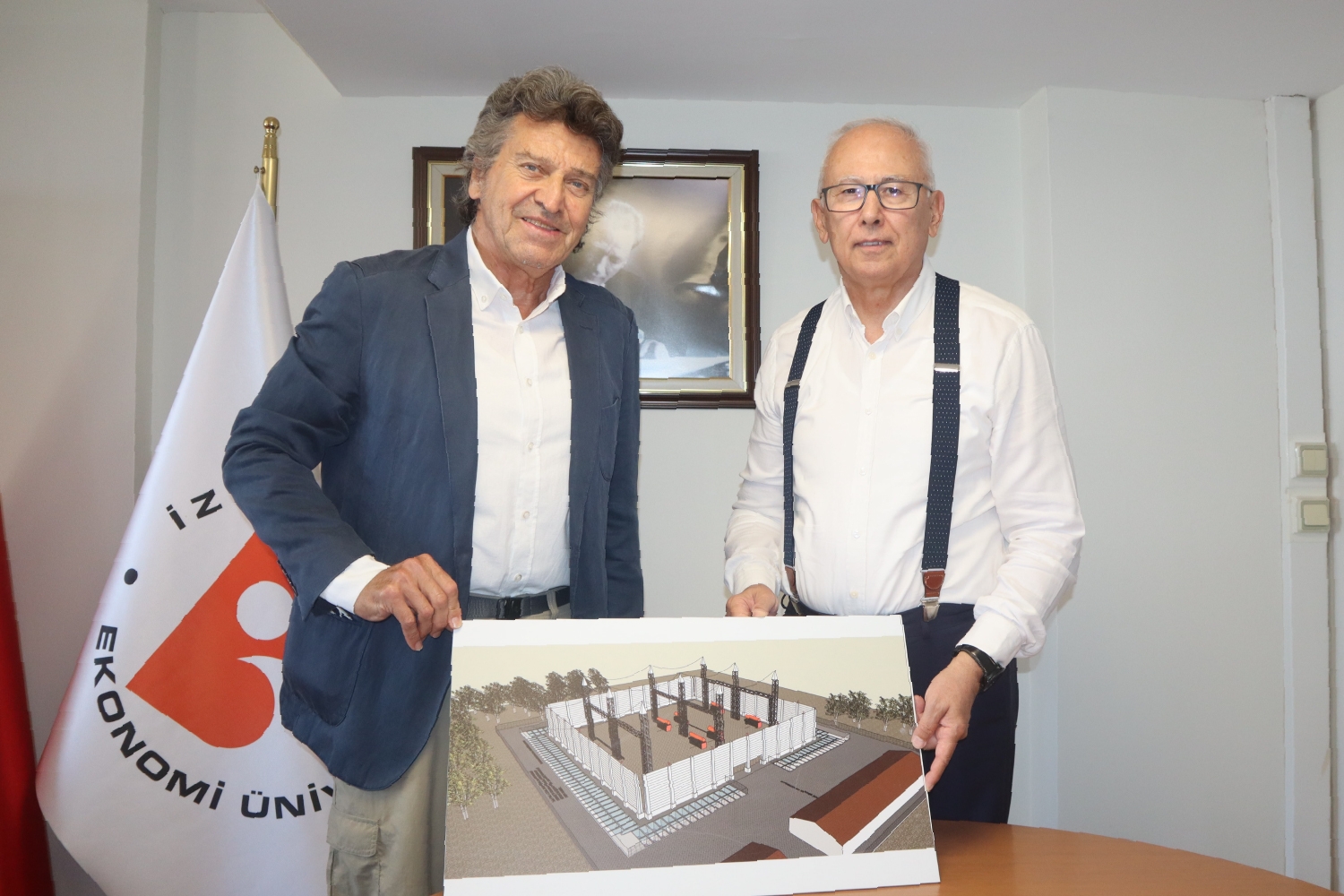
The great increase in forest fires, with the effect of climate change also, impelled the professors at Izmir University of Economics (IUE). IUE Rector Prof. Dr. Murat Aşkar and Head of Department of Civil Engineering, Prof. Dr. Celalettin Kozanoğlu developed the ‘firewall’ project, which can spray water up to 150 meters in order to extinguish the fires in a short time and prevent them from spreading to large areas.
Firewalls, which can be easily transported and installed quickly because they are prefabricated, will surround transformers, thermal power plants or settlements in areas close to the forest. Pumps with the ability to spray water quickly will be placed on the walls. Water areas in the form of pools will be built around the wall. The water pumps inside the wall will be activated instantly with the help of sensors that measure the temperature in a possible fire and will intervene in the area where the fire is. The walls will prevent the spread of the fire to larger areas and will take on the task of blocking the fire. Fire walls will be able to discharge a total of approximately 20 tons of water around in 1 minute and will reduce the cost of extinguishing the fire. The water needed by the pumps will be met from the water pools built around the walls.
IT BECAME A NECESSITY
Noting that fires can be caused by short circuits or sparks in transformer facilities as well as climate change and personal negligence, IUE Rector Prof. Dr. Murat Aşkar said that ‘firewalls’ became an essential requirement. Sharing details about the project, Prof. Dr. Aşkar said, “This project will protect switchgear, transformer, thermal power plant and residential areas from forest fires. Firewalls can be applied to both existing facilities and new facilities or residential areas. The most important element that brings the project to the fore is the water spray pumps to be placed on the prefabricated concrete columns. These pumps will meet the water they need from the pools located in front of the wall. These pools will also act as a ditch protecting facilities or residential areas from fires.”
RESISTANT TO 100 KILOMETER WIND SPEED
Prof. Dr. Aşkar continued as follows: “A temperature gauge will be placed on the firewalls. The water reservoir in the fire pools will also be connected to the spray nozzles and spray pumps via hoses. The sensor measuring the temperature will send a signal in case of a sudden change in temperature values and the water pumps will start to work. This system is sufficient to extinguish the fire early and can be mounted anywhere. Since the prefabricated concrete walls, which will be prepared with a wind speed of 100 kilometers, can be produced entirely from domestic sources, there will be no need for foreign dependency.”
WE APPLIED FOR PATENT
Prof. Dr. Celalettin Kozanoğlu, Head of IUE Department of Civil Engineering, stated that they applied to the Turkish Patent and Trademark Office to obtain a patent for the project, which will provide a significant advantage in firefighting, and that the process will be completed in a short time. Stating that they worked on the project meticulously, all the details from cost calculation to basic design and earthquake analysis were considered, Prof. Dr. Kozanoğlu said, “The fires that occurred frequently in the last period caused deep sadness to all of us. Unfortunately, global warming and climate changes that affect all of our lives threaten forests for the coming years as well. For this reason, we need to take precautions now and focus on how to protect our forests from fire. The project we prepared together with the Rector has matured precisely with these thoughts. Our project is also like an urban furniture. Thanks to its independent production and assembly possibilities, it also creates a serious employment opportunity.”
DESIGN FOR LAND SUITABILITY
Prof. Dr. Kozanoğlu continued as follows: “Prefabricated walls provide flexible design opportunities in accordance with the topography of the land. For example, it is possible to produce according to changing factors such as land slope and tree height. In addition to the wind, it is also very resistant to a possible earthquake. Aerial firefighting is mostly used by helicopters or airplanes to put out fires around the world. Of course, this is also effective, but not enough. With the project we propose, it is possible to discharge approximately 20 tons of water in 1 minute. But you can't do this with a helicopter. When you consider the advantages of the project, it seems to be quite feasible.”



